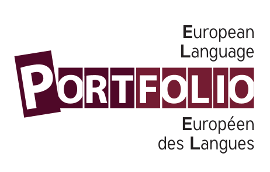Principles, Guidelines and the CEFR
All ELP models conform to a set of Principles and Guidelines that specify:

- its explicit aims, notably to foster linguistic and cultural diversity, to promote intercultural learning, to support lifelong plurilingual learning, to develop learner autonomy, to provide a transparent and coherent means to record communicative competence (relating to the Common European Framework of Reference for Languages) that is recognisably European
The Annotated Principles and Guidelines describe the above points in detail.
The Principles and Guidelines were adopted and the development and use of the ELP were recommended by the Ministers of Education of all the member States of the Council of Europe in the Resolution on the European Language Portfolio (adopted at the 20th Session of the Standing Conference of the Ministers of Education of the Council of Europe, Cracow, Poland, 15-17 October 2000).
The Common European Framework for Reference for Languages: Learning, teaching, assessment (CEFR) can be used to specify language learning goals and outcomes in an internationally comparable manner.
The CEFR describes in a comprehensive manner:
- the competences necessary for communication,
- the related knowledge and skills and
- the situations and domains of communication.
The CEFR defines levels of attainment in different aspects of its descriptive scheme with illustrative scales. These are summarised in the Self-assessment Grid.
The illustrative scales of the CEFR have been supplemented by further scales and sets of descriptors that have been linked to those of the CEFR. The Overview of CEFR-related scales lists all of these.
The levels of the CEFR have been illustrated by videoed examples of learner performance, sample test items from examination boards and so on. Materials illustrating the CEFR levels lists all of these.
Language Policy Portal
www.coe.int/lang
European Centre for Modern Languages
(ECML) - Graz, Austria



